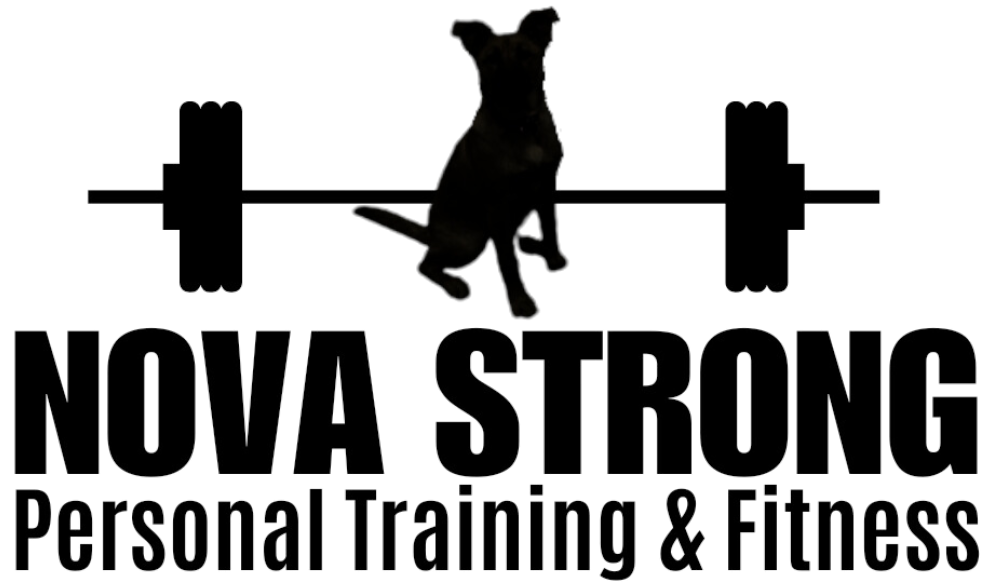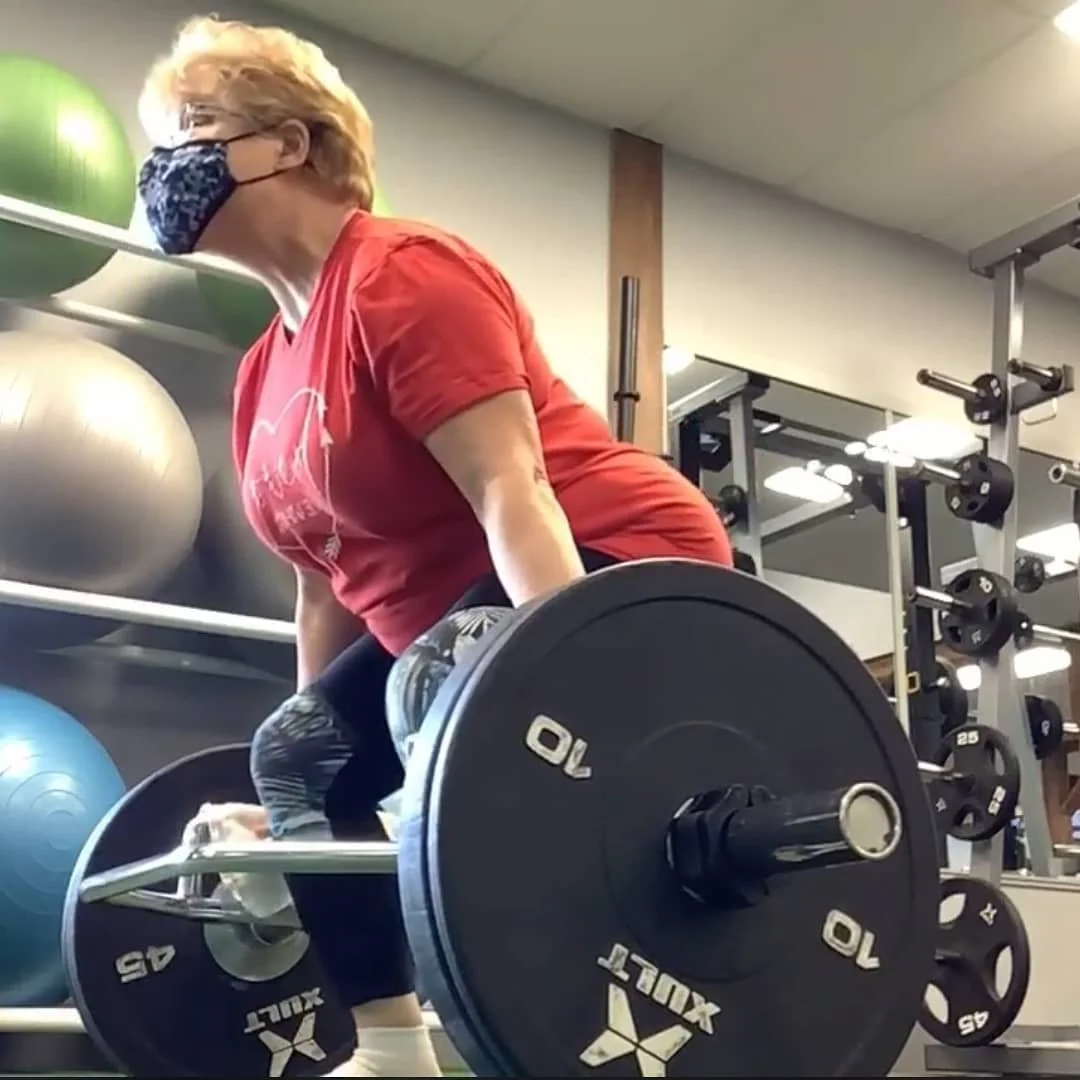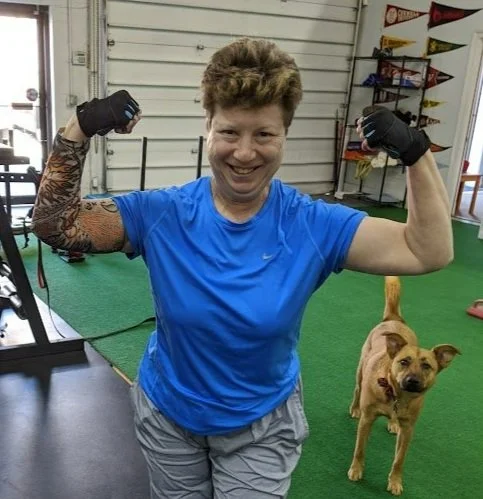A Personal Trainer’s Guide to Combatting Sarcopenia
As we age, our bodies naturally undergo various changes, including a gradual decrease in muscle mass and strength, known as Sarcopenia. This condition isn't just an inevitable part of aging; it's a significant health concern that can diminish our quality of life, independence, and longevity if not addressed. For individuals in their 50s and beyond, understanding and combating Sarcopenia could be the difference between being able to get out and enjoy the golden years or being confined for them.
When we're younger, we often think of having muscle mass as an element of aesthetics or sports, but as we age, creating and keeping muscle mass becomes more of a lifeline. Sarcopenia affects a substantial portion of the aging population, leading to increased risks of falls, injuries, disability, and even hospitalization. The loss of muscle mass and strength has profound implications on our metabolic health, contributing to a slower metabolism and a higher risk for chronic diseases.
However, there is good news:
Sarcopenia is not an irreversible fate.
Proper strength training can counteract the effects of muscle loss, promote the reacquisition of strength, and enhance overall health and vitality.
Addressing Sarcopenia is not merely about extending life but enriching it. By improving muscle health, individuals can preserve their independence, reduce the risk of falls and injuries, and significantly improve their quality of life.
Understanding Sarcopenia
As I said earlier, Sarcopenia refers to the loss of muscle mass and function that occurs as we age. This condition should not be taken lightly as "just part of getting old"; it's a severe health issue that can be slowed and even reversed through diet and exercise. In the same way that we want to stay mentally sharp and active to combat cognitive decline as we age, we want to do what we can to prevent Sarcopenia.
One of the main risk factors for developing Sarcopenia is muscle weakness. While it may seem weird to differentiate between strength and muscle loss, it's essential to know that strength loss, not muscle loss, has been consistently shown to increase the risk of disability and death. This underscores the necessity of staying active and striving to make tangible improvements in physical strength.
Unfortunately, like with cognitive decline, some people are more likely to experience a greater rate of muscle loss as they age. Being of older age, of the female gender, of lower education, of lower socioeconomic status, being underweight, and lower birth weight are all associated with a higher likelihood of Sarcopenia.
Statistics reveal that Sarcopenia can start as early as age 30 and can result in a 3-5% loss of muscle mass per decade up until age 50. It's estimated that muscle mass will decrease by 1-2% annually and muscle strength will decline by 1.5% between 50 and 60, but then accelerate to 3% annually after.
The presence and severity of Sarcopenia can have far-reaching effects on one's health and mortality. The mortality rate of older adults with Sarcopenia is a whopping 41% higher than those without Sarcopenia. It's also been associated with a higher rate of metabolic conditions and cardiovascular diseases such as insulin resistance, non-alcoholic fatty liver disease, hypertension, and more. Plus, individuals with Sarcopenia have a 58% higher risk of fracture and are twice as likely to be hospitalized.
While it's bad enough that Sarcopenia has such a drastic impact on one's longevity, it also can have far-reaching effects on their quality of life. Individuals with Sarcopenia, regardless of age, have a 13.8% increased risk of dependency for activities of daily living, while older individuals with Sarcopenia have 1.5 to 4.6 times more risk of disability. When the comorbidity of obesity is also present, it's been found that individuals have a poorer quality of life, longer hospitalization, and more significant mortality rates than individuals with a healthy body composition.
While these statistics may sound scary, it's important to understand that, withstanding any underlying disease, many contributing factors to this condition are entirely within our control. Sarcopenia is classified and diagnosed through a variety of strength, performance, and body composition tests. Our goal to reverse its effects is the same as trying to score higher on these tests: we must train for them. By eating enough protein and calories, staying active and mobile, and, most importantly, picking up enough heavy things, we can mitigate, if not reverse, the effects of Sarcopenia.
How Strength Training Can Reverse Sarcopenia
Strength training is the closest thing to a silver bullet for Sarcopenia. Study after study after study has shown the efficacy of strength training in not only reversing the loss of strength but also, when combined with proper nutrition, reversing much of the muscle loss associated with aging. Strength training can also be specifically applied to address other associated risk factors such as weight management, balance, and mobility issues.
A common misconception is that traditional strength training may be dangerous or inappropriate for individuals over 50. This concern is largely unfounded, primarily when employed correctly.
One study by Vargas-Malina sought to understand if an aged population would respond differently to a traditional periodization scheme. They found that men and women over 65 responded similarly to younger populations for increasing muscle mass.
The LIFTMOR Trials also wanted to explore the training responses of 65-year-old post-menopausal women but took a more aggressive training approach. They had trainees complete a training program consisting of deadlifts, overhead presses, and back squats done for five sets of 5 at 85% of their max (read that as "pretty freaking heavy"). Before initiating the study, they carefully progressed each trainee to the designed program. They found increased strength, lean muscle mass, and bone density while reporting no adverse events or injuries.
These results don't mean anybody can expect to start lifting arbitrarily heavy weights and see positive results. After all, "Random workouts lead to random results."
Tips to Get Started with Resistance Training to Fight Sarcopenia
Getting started can often be daunting, especially for those who don't have any formal resistance training experience. Remember that almost any form of exercise can help to slow the progression of Sarcopenia, so taking baby steps into a new exercise routine can yield noticeable results.
As you start to dip your toes into resistance training, here are Five tips that we give during our consults to help older individuals pick up strength training to combat age-related Sarcopenia:
Progression—Progression is the cornerstone of any quality training program and is probably the most critical factor for safety and efficacy. Starting at more accessible efforts and slowly increasing reps or weight over time is paramount to constantly improving and adapting. It's essential to be patient and let time work in your favor.
Individualization—For many older individuals, preexisting joint and cardiovascular issues need to be considered when beginning weight training. These are easily addressed when working with a quality fitness professional. Finding appropriate exercises that feel good on your body and allow you to progress will help you start on the right foot.
Frequency and consistency—If someone is experiencing more intense symptoms related to Sarcopenia, their goal should be to well, do more to combat it. Increasing their exercise and aiming to perform full-body resistance training at least three times a week is a great starting point if someone really wants to try to put on more muscle and reverse Sarcopenia.
Protein—Dietary protein is broken down and used to help rebuild muscle. If someone's protein intake is low, it's going to drastically impair their ability to rebuild or even maintain muscle. Older adults should get at least 1.2 grams of protein per kilogram of lean body mass and often can benefit from more. It's even better if this protein is distributed throughout the day, averaging at least 20 grams per meal.
Simplicity—When starting, keeping things simple will allow you to stay consistent. Even just starting with machines can give you an easy entry point that allows you to get progressively stronger until you're ready for larger, more technically driven exercises such as pressing, squats, and deadlifts.
Common Questions about Strength Training in Older Populations and Sarcopenia:
Should a 60+ year-old actually lift heavy weights?
Keep in mind that heavy is relative. A 60+ year old should lift "heavy enough" that they are seeing positive changes in their physical health. For many, this means starting relatively light and going heavier over time. Each situation will be unique, but an elderly individual must find some form of resistance training that allows them to scale and progress their strength over time.
What's the best exercise for Sarcopenia?
The best exercise is one that someone can do safely and consistently while adding weight or volume. In an ideal situation, it would be a compound exercise that uses most of the body and has better transfer to other physical abilities, which is why squatting, pressing, and deadlifting are so commonly used in research interventions. If physical or logistical limitations prevent this, then someone can still make meaningful improvements through weight machines or even bodyweight exercises.
Should someone with joint pain or artificial joints strength train?
While joint pain and artificial joints may provide obstacles for many to resistance training, it should be treated as a yellow light, not a red one. Care must be taken with both exercise selection and progression. In the end, many orthopedic conditions can be improved with a conservative strengthening routine, and as we saw with some of the earlier statistics, being strong can do a lot to improve longevity.
What is the best way to get started with fighting Sarcopenia with minimal exercise experience?
The best place to start is to work with a qualified professional that understands your needs, goals, and health history. A personal trainer, strength coach, or physical therapist are all great professionals to teach you how to lift weights properly and help you develop a routine to maximize your resistance to aging.
Ready to fight Sarcopenia?
At NOVA Strong Personal Training and Fitness, each of our Coaches is highly trained and educated to fight age-related conditions such as Sarcopenia. We have countless clients who have come to us specifically to address their muscle and bone loss, and we have numerous success stories to show how we have reversed it.
If you're ready to take charge of your health and regain your strength, click below to schedule your free intro and learn how you can Get NOVA Strong.







